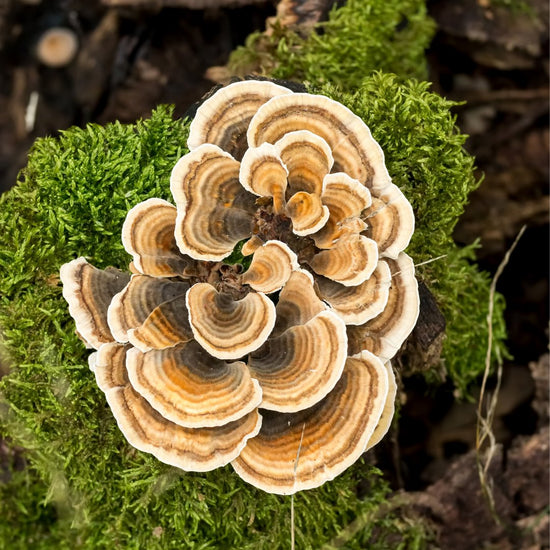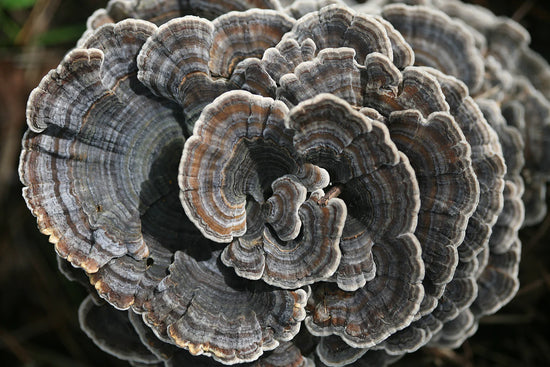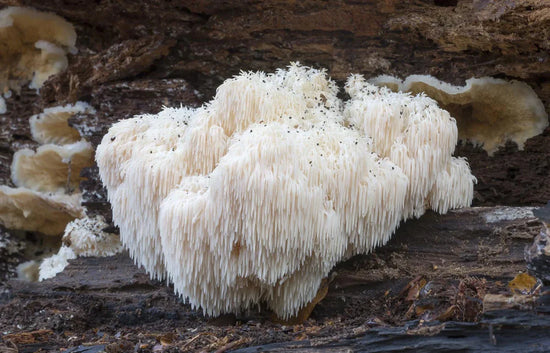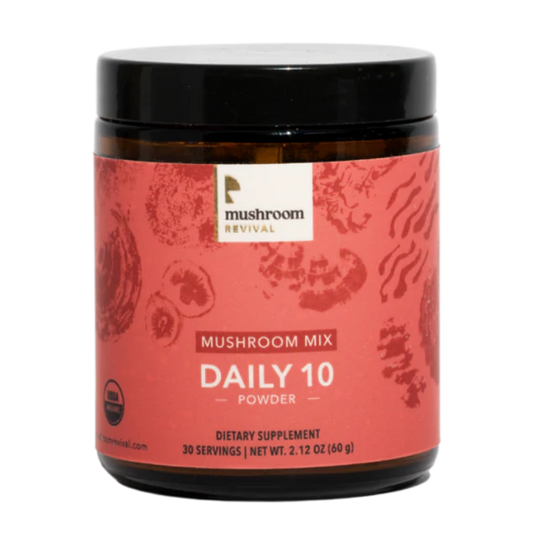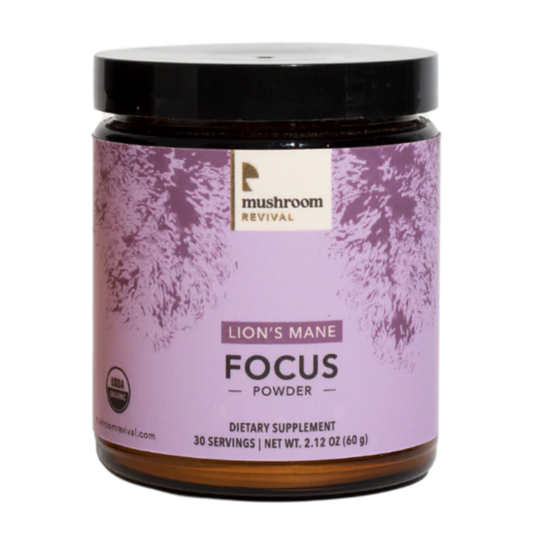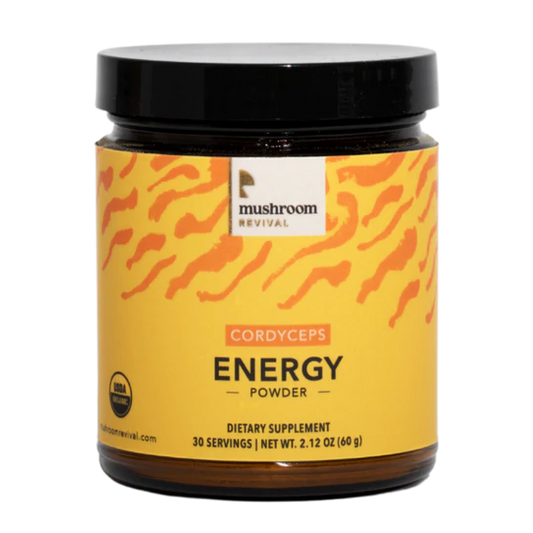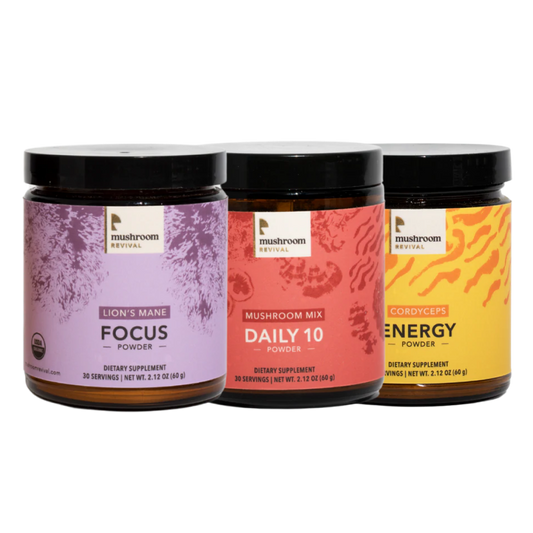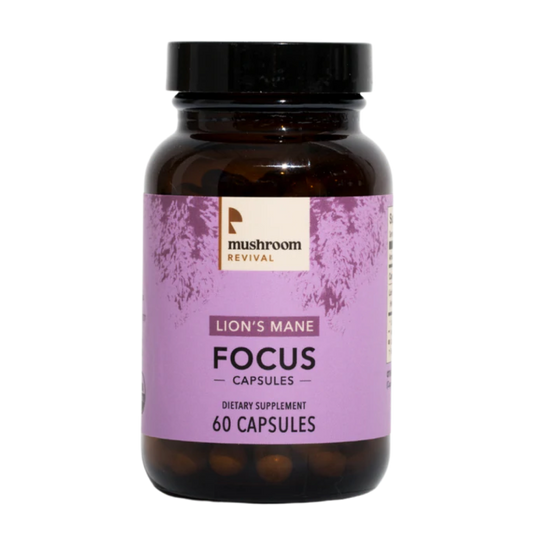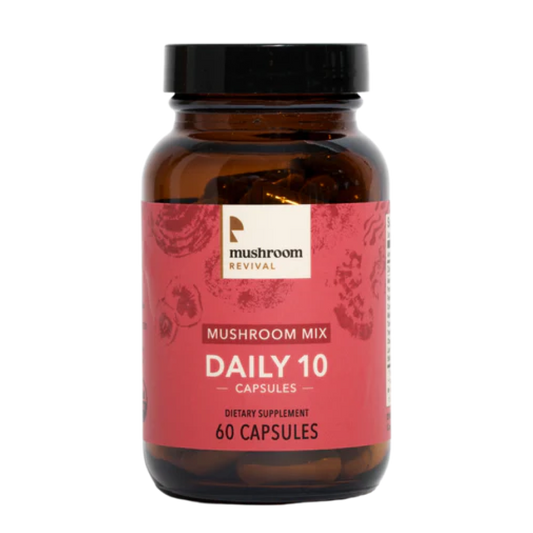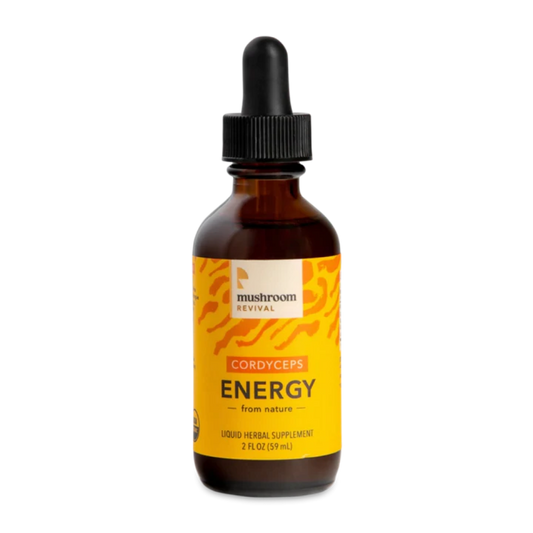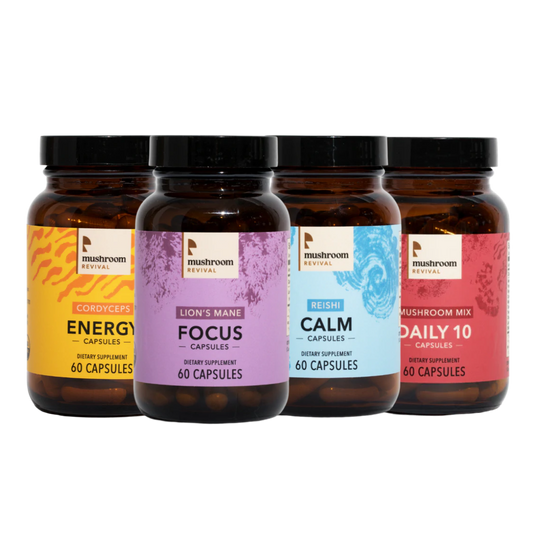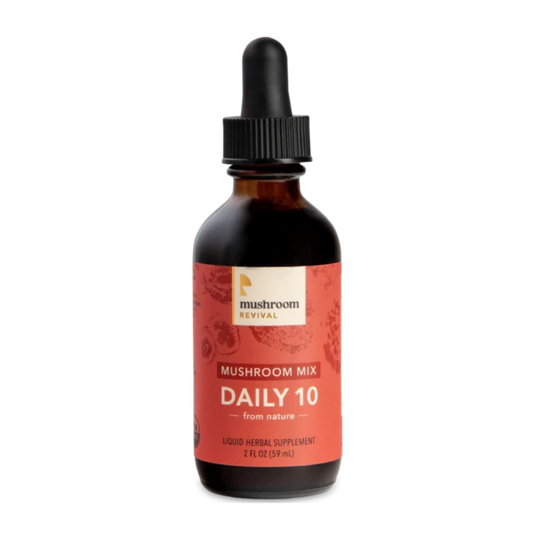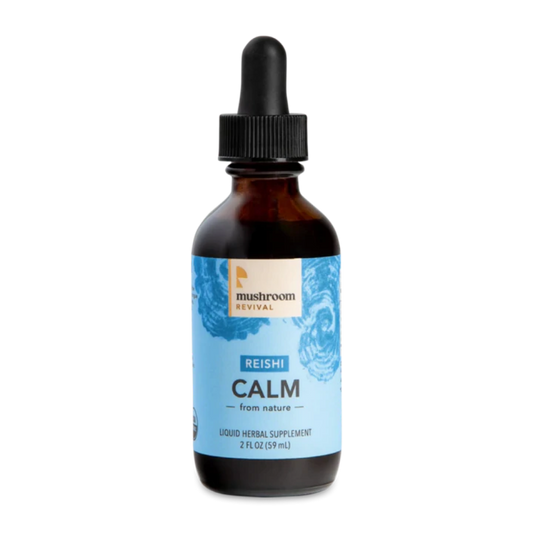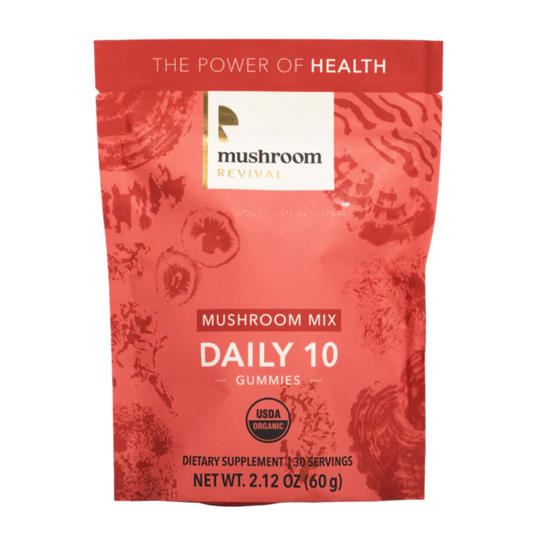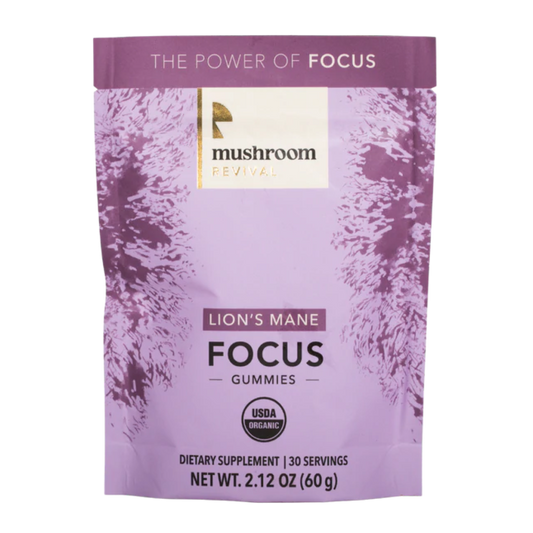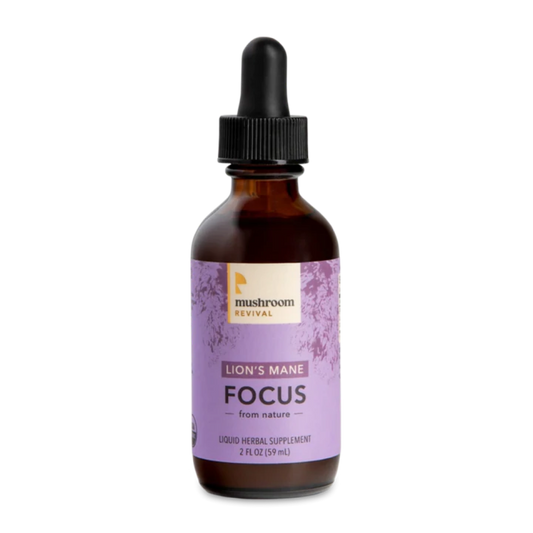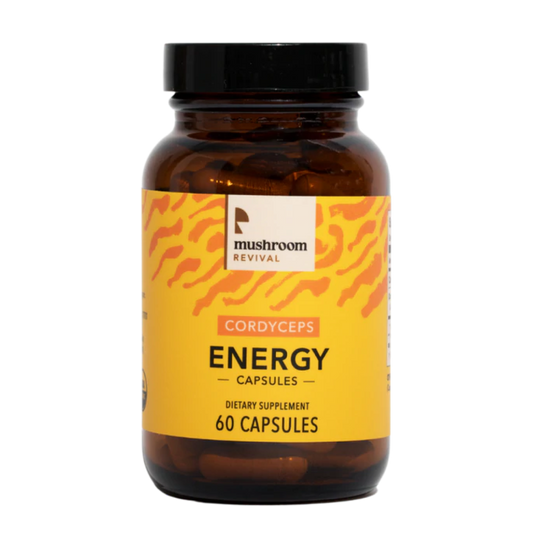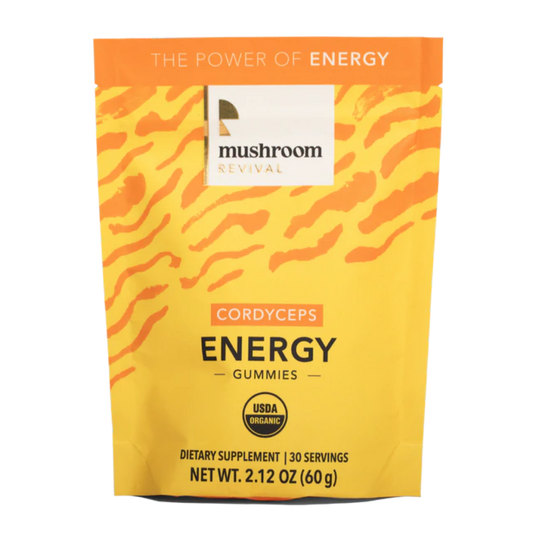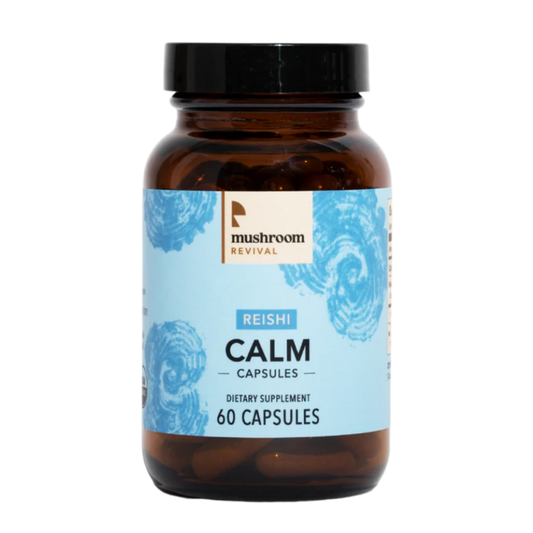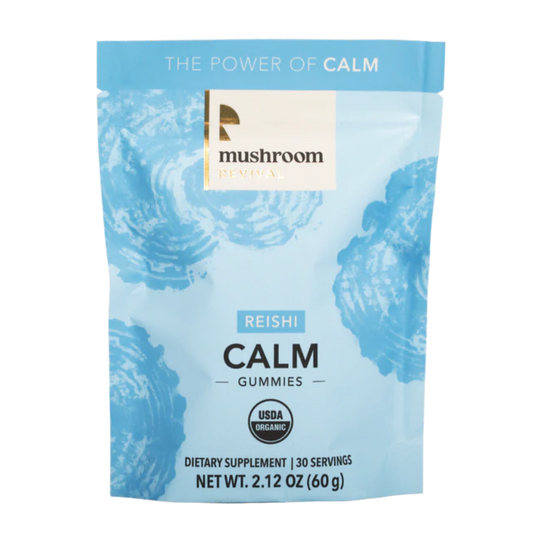The Soil Food Web
Modern farming practices are destroying vital soil ecologies, and our patch work solutions aren’t making things any better. Today we are joined by Dr. Elaine Ingham, a leading soil ecologist who has established the Soil Food Web School, a platform that teaches people how to optimize their growing operation and advocates the return to greener practices.
We discuss how we can repair the land using simple, natural, systems, and how in doing so we heal the planet by increasing carbon sequestration, depolluting water supply systems, catalyzing environmental justice and so much more.

Some Key Points from the Episode:
1. Healthy Soils Are Imperative for a Sustainable Future
Healthy soils make more nutritious and bountiful plants. This allows their root systems to be robust and sequester more carbon from the atmosphere. One key element the Soil Food Web advocates for is ditching inorganic fertilizers as it creates a radical imbalance in microflora, fauna, and funga, and results in contaminated waterways which harm the organisms that drink it — including us.
2. Farms with Balanced Soils are Easier to Manage
Dr. Ingham talks about how reclaiming biocomplete soil makes life as a farmer easier. With proper microbial balance, weeding becomes obsolete, excess fertilization becomes unnecessary, pests are better managed, and crops are more delicious and nutritious, resulting in better sales.
Simple practices such as using local microbial species, composting, ditching the till and the inorganic fertilizers are the bulk of changes to be made.
3. Anyone Can Build Balanced Soils
We cover a lot of the basics on how to take care of, and even repair your soil in this podcast. But for those who want to go deeper, whether you have a small garden or are on an industrial sized farm, the Soil Food Web offers the education and consultation needed to support your goals. The Soil Food Web School works at scale and works at home.
More Topics covered:
- Soil health before human influence
- Practical ways we can rebuild microbial populations for healthier soil
- Specialized relationships between soil fungi and plants
- Successions of ecosystem health from the soil to mature plants
- The adversaries of inorganic fertilizers
- Analyzing ratios of the fungal and bacterial needs to grow healthy plants
- Cultivating and sourcing biocomplete compost
- Industrial level compost production and soil remediation
- Carbon sequestration in soil health
Show notes:
Soil Food Web website: https://www.soilfoodweb.com/
Dr. Ingham’s published work on soil ecology: https://www.soilfoodweb.com/publications/TRANSCRIPT
You're listening to the mushroom revival podcast.
Lera 0:05
Today on the mushroom revival podcast we are talking with Dr. Elaine in ham, who is a soil ecologist and walks us through the important role that not only fungi but all microbes in the soil play for maintaining healthy ecosystems. At the time of recording, my voice was out of order. So it is all Alex guiding this conversation. But nonetheless, enjoy a delightful conversation with a brilliant woman to help us honor and support the vital subterranean life that lives beneath our feet.
Dr. Ingham 0:48
I'm Dr. Elaine Ingham, I am a soil microbiologist and probably through the fact that I've been interested in in bacteria and fungi. You learn about their predators, you learn about the things that control the habitat around them. So you can develop the mixture of the bacteria and the fungi and the protozoa, nematodes in the micro arthropods in the Inca trades in the earthworms, and all those other good things that live in soil that determine what the productivity of the plants in that system is going to be. And it really helps to determine what plants are going to be growing in a healthy fashion. In that soil. It is the biology that does all the processes in soil. And so we need to understand those processes, especially when we know we have to put that carbon back into our soils from whence it came. So the just the most incredible, incredible thing to me about soil chemists, soil scientists that say, Oh, we can't get any more carbon back into the soil. It's just not possible. It's the way you know, when our pioneers rambled across the Great Plains of the United States, they found soil that was incredibly rich. It was in some cases, it was probably more than 50% organic matter. And so they grew crops and they were bountiful, and they you know, Garden of Eden, the land of milk and honey because it was so easy to grow things. But after a while, they started to find that they couldn't grow the crops, they were having lots of diseases and pests and problem organisms. And so they started using the quick fix, which did nothing to solve the problem. The problem was that they had killed the bacteria and the fungi protozoa, nematodes, that whole soil food web was gone, for the most part. And so they started to use the toxic chemical approach. It's very short sighted. And it causes incredible amounts of problems. Because it blew off all that organic matter that was stored in the soil. We lost nitrogen and phosphorus and sulfur, magnesium, all of those nutrients started leaching out of our soils and running off into our rivers and lakes and streams and into the oceans and causing incredible problems. We need to get that and put it back in our soil. And so how do you do that? That's probably the question that I've been focused on. Most of my career is exactly how do you get the organisms back into the soil so that they can do their work for you and rebuild your dirt and converted into soil.
Alex 3:55
You touch on three kind of main points of why, you know, improving our soil is so important. The first is healthy plants. The second is putting carbon back into the soil and the third is unhealthy soil leeches, certain things that disrupt our waterways. And so these three things are really important and probably just the the tip of the iceberg of all the different benefits of healthy soil. Why? What are the main threats? You know, you talked about a little of the history, you know, why? Why is our soil deteriorating? Why? What are the main causes of unhealthy soil?
Dr. Ingham 4:44
Ignorance, people being lazy, they found a quick easy fix, which was actually not a fix it. They were just playing games with symptoms, and they thought they were doing a good job. So you know you you can kinda blame them for being ignorant. But well, you know, it was, it seemed pretty easy and like the way to go, so maybe we can forgive them. However, we, we need to have people who are stuck to that old way of thinking that green revolution, we need to really understand what we did. And most of the consequence of starting to use heavy amounts of inorganic fertilizers, all of which are salts, which means you're taking water away from the plant, and you're taking water away from the micro organisms, the plants a lot bigger than the micro organisms, so the micro organisms that are going to be the first to die, and when they die, then all of the functions can no longer be done, you've got dirt instead of soil, dirt is just the sand, the silt, the clay, the rocks, the pebbles, the mineral component of the soil. Hans, Yanni, the father of soil science said that, or one of the fathers of soil science said that not only did you have to have the mineral fraction, the sand, the silt, the clays, the rocks and pebbles, where all the nutrients reside in a crystal and, you know, very well attached form inside the crystalline structure of the sand, silt, Clay, rocks, pebbles, etc. But you also had to have the organisms in that soil in order to have the processes be performed. micro organisms make enzymes just like any living creature makes enzymes, and that drops the amount of energy that you have to expend, in order to get a job done. So those enzymes are incredible, we've got to make certain that they're going to be produced and utilized an insect doesn't last very long in soil. So you know, it has to be produced and used and the benefit to the plant has to be realized. So when we're talking about inorganic fertilizers, we have to stop doing that. So we stopped killing all these wonderful organisms. To that, know me, if you don't have water, if the water is sucked out of your body, you're not going to be able to perform those functions of making the enzymes and doing all of the processes that your plant requires. And it's not only that, when we start thinking of how our nutrients cycled in soil, there's three, probably the main ways of getting those nutrients into a root system. And some of those processes of getting nutrients inside the root system are very different depending on where you are in succession. Very early on in succession, it seems like you have a lot of the rise of Ag is occurring as you get a little further on in succession, you start seeing that it's the ratio of fungi to bacteria that are controlling things in the soil. As you move into perennial systems, that soil has to be very fungal, in order to promote the growth of the shrubs of the bushes of the trees of the conifers. succession is all about what's going on in the soil. What's the balance of bacteria and fungi? Early on, it might be rice of he, but then this nutrient cycling system that has been operating in our soils for probably the last three and a half billion years been used by Mother Nature for that lawn? Why do we think that we know better when we come along and say Oh, poor little Mother Nature, she doesn't understand what she's doing, you know, the proverbial pat pat on the head. And we think we have the right to mess up the whole system. Well, you know, Mother Nature is going to turn around and bite us badly if we don't pay attention. And I'm I worry about we're already on over that threshold. When we look at what's happening with the temperatures on the planet this year, this summer, it's just an incredible we've never had the this many long, hot days ever. So write it maybe we need to wake up and hurry up and start to get these organisms back into the soil so that the normal functions of the soil can happen. So when we're talking about nutrient cycling in the soil, in that central, that middle part of the succession process and all the way to the The old growth too as well, the process is that it is the plant that is putting out exit dates. And all plants produce exit dates. And you know, it's like, well, what's the heck is an exit date? Well, it's mostly simple sugars, it's a little bit of amino acid and protein. And it's a little bit of carbohydrate. And so you can think of all the different kinds of sugars on this planet, we haven't even found them off sugars, there's more sugars being found, you know, daily, they tend to get there only in very rare habitats. But yeah, nevertheless, it's that mix of exactly which exit date is your plant, deciding to make in order to wake up the bacteria and the fungi that may be there dormant stages, or they're, maybe they're or they're an active, but you know, they're not going at full speed ahead, they're, you know, not really getting fed very well. So we're just going to hang out here on the edge of the, of the road and, and watch all the traffic go by or something. And then when the right exit eight comes out, they recognize that as food, and they start to pump out the eggs, the enzymes to pull those nutrients out of the sands, the silts and clays out of that crystalline structure, and into the soil and any organic matter, a plant may send the right kind of food to make those enzymes that will pull the nutrients out of the organic matter, that's in the soil. So when you think about the fact that Mother Nature has never put inorganic fertilizer on anything, and yet we have ecosystems that those trees are so large, they're so big, that those trees on that acre of land, are going to be taking up more nutrients than you would see in any crop that we produce, and take that produce to the market and sell it.That forest is sequestering and putting away in its biomass, the more nutrients than any agricultural field. And yet, there is nobody putting inorganic fertilizer out there to grow the Sequoia, or the you know, the Douglas fir old girl stands or all of the different old growth types of plant production. No one's putting out inorganic fertilizers. So year after year, for the last 2000 years, those trees have been there. How is it that they're still getting all the nutrients that they need to grow very well, very rapidly. And in a very healthy fashion. It's all about the right biology in the soil. And we have to start recognizing that if you want to grow corn, you better recognize that corn has a requirement for a proper ratio of bacteria to fungi. Corn has a requirement of another one of those ways to pull nutrients from the soil, you have to have mycorrhizal fungi on the root systems of your corn. If you want to grow corn to its full genetic ability. You've got to have the biology in the soil, you can't be feeding it inorganic fertilizer, you can't produce the yields. That can be when we put the right biology out. So for people at home or you know gardeners, farmers who just said you know there is a right ratio of bacteria to fungi for say corn. And you were talking about how more perennial crops need a higher level fungi use a great guidebook or you know, I'm guessing it depends area to area, right of, you know, different species of bacteria, different species of fungi, different ratios depending on what kind of ecosystem you live in. For people at home, like how would they go about? Is there an easy way to test the health of your soil on your ratios and XYZ and then you know, add a little more fungi or a little more bacteria and then tested again. We've been I've been working my whole entire life well since I started my PhD really well and even before that, because I was working with microscopes. Before that. I'm getting fairly simple microscopes, shadowing microscopy, brightfield, shadowing microscopy is what you need. And so you can buy the less expensive microscopes out on the market and you will be able to see everything thing that you need to see, you're not going to be able to identify the fungi down to species, we don't have to do that. That's just that's insanity. If you if you have abused your soil, and you have everything totally discombobulated, yes, then you have to identify diseases to species level, because you've got to match the toxic chemical that the chemical people are going to try to sell you to kill that specific organism. And most of the time, we develop resistance, those disease causing organisms develop resistance to those really toxic chemicals. And so the chemical companies have to find another solution, which is to kill it, well do what nature does, which is to make sure the balance of those things that eat the bad guys, those things that compete with the bad guys, those things that inhibit their growth, occupy their space, take their food away from them, those are what you want to have in the soil. And then as long as they're there, your plants going to be waking them up in plenty of time to deal with the problem. So you never have to put a pesticide out. You never have to do anything to remove disease cause outbreaks because it doesn't happen anymore. Same thing with weeds. We if you understand the biology in the soil, and you realize that things that are truly weeds, and require almost completely nitrate is their source of nitrogen. But as you get into later and later successional stages, certainly by the time you're trying to grow corn, you need to have at least a one to one ratio of fungi to bacteria, because the ammonium produced by the fungi, in balance with the nitrate hit exactly the right balance so that the weed seeds can't germinate. They can't grow, and there are therefore not a problem. So switching, you know, what do you instead of doing the toxic chemicals, instead of putting the pesticides or the inorganic fertilizers out, what you're going to be doing is putting the micro organisms out. And the simplest, easiest way to do that is to make your own biologically complete compost. So all of the organisms are present in that material, maximize your capacity in your soil by constantly making better and better and better compost piles. So you take an inoculum from your last compost pile, and add it to your new organic material that you're about to start composting. And you just make better and better compost. And so you'll see better and better yields for two to three years, they'll keep getting higher and higher, because you're getting all of that diversity back into the soil. So it's understanding all of those proper or necessary interactions going on in the soils. So you get everybody present. You don't have to identify them to genus species. We don't need to know that they're Greg and Michael, and you know, Terry and George and john, that Nope, we just want a diversity. So how do you get up the full diversity of the microorganisms, but you got to get out there and you got to get the foods, you have to put in all this diversity of foods. And that's really simple. When you start, you know, start growing different kinds of flowers, different kinds of ground cover different kinds of grasses. And now you've got the whole diversity of what you need. Grow Your Own high nitrogen, so that the pile heats up in time, Grow Your Own green stuff, Grow Your Own woody materials, and then you're not paying anybody, you're making your own. Now, if you don't like making compost for some reason, I can't imagine anybody not liking compost, but I'm sure it happens. So what we're trying to do is have locations all around the world where people go and pick up their 50 pound sack of good compost with the indigenous local organisms present in that compost because it was made locally. So you take some of that home and you put it around your garden, your fruits, your vegetables, in the proper ratios. You have green plant material you mix in with the compost, you have woody material, you mix in with the compost depending on what you need.
Alex 20:00
To improve and you would recommend, you know talking to a local farmer getting their compost over a, you know, a bagged compost mix that you can get at a garden store because of the local micro flora that you're talking about.
Dr. Ingham 20:16
Yep, you really don't want to be thinking about mine bag compost that came from Pennsylvania. If you live in in California, just think of those organisms in Pennsylvania when you introduce them to the climate in California. Just think of those poor little bacteria and fungi, protozoa and nematodes, etc. Just kind of going, what the heck is this? I'm just gonna go back to sleep until the nice rainy cool summer days come back, and they will never wake up and grow again, because those are not the right conditions for those microorganisms.
Alex 20:54
So I'm happy I'm happy from a micro raizel fungi standpoint. I know that's that's the big buzz right now. And a lot of people are talking about mycorrhizal fungi, which you can get locally and you know, your native species, it's much easier to get powder that has a bunch of different species that you you know, dip your seeds in or your cuttings or your plant your small seedling roots. Are there mycorrhizal species in your in your compost? Or do you have to get mycorrhizal fungi another way?
Dr. Ingham 21:34
In most composting situations, those spores of mycorrhizal fungi are killed one way or another. When you're doing the thermophilic compost pile, the high temperatures will kill the spores, you may see the spores in your compost pile. But if you've killed the diseases and the pests and the problem disease organisms, you've killed the mycorrhizal fungal spores as well. So, you're going to have to go out and find an inoculum locally. Well, once you start growing the mycorrhizal fungi in your soils and you can use your microscope to assess whether you've got the mycorrhizal fungi or not. Then your you can get you grab your own mycorrhizal inoculum from your own land. If you've got a little bit of forested area, you've got all the mycorrhizal fungi that you need, just make sure that you grab it, put it back into your like when you're planting, you just put a dusting of that material down in furrow or where you're starting your starts you mix those spores into your compost that you're going to start your starts in, because you want all the indigenous local species. Now, one factor kind of in the favor of having one In one, two or three different places around the United States that actually grow the mycorrhizal spores is that so much of what we eat came over from Europe when we colonize the United States. So most of our crop plants can do just fine on mycorrhizal fungi using mycorrhizal fungi that came from Europe. So most of the glomus species are brought were brought over. And yes, there has been a lot of adaptation and local mutations to allow those mycorrhizal fungi to do a good job. But then you really also want to get some of the other local indigenous mycorrhizal fungi. And the only way to do that is to go out into your different ecosystems, and collect small bits, push the soil, the leaf material that you can recognize what plant that organic material came from, push that aside, and find those little places where you've got the nice white, fungal, hyphy, or black or brown, or pink or purple, or orange or green, fungal strands in that Oh, horizon. And just a pinch of that don't take the whole thing. Because if you take the whole all of that fungal body, you're harming that forest, and what you need is not going to be there next time. So you got to leave it intact in the original ecosystem that you're in. You just take a small pinch, that's all it takes to get those fungi established. On the root systems of your plants, you're going to be putting that material into your compost pile, for example, after the temperature has come down, and it's back at ambient temperatures. Now you add those small little bits fungi that you took, and you make certain your soil stays aerobic. That's another really important factor. The beneficial organisms require oxygen. In order for other enzymes to work in order for their EMS enzymes to function. If you start using up more oxygen in your soil, then can diffuse into your soil. Like you don't have, well structured soil, the bacteria and fungi haven't been doing their job probably because they've been poisoned, or assaulted to death. And they don't build the structure. And so now you can't get oxygen into your soil. That means you're not going to have these beneficial organisms, even though you might put them in there. If you have compaction, if there's something that's preventing movement of oxygen into the soil and carbon dioxide out of the soil, you're gonna have some pretty unhealthy, unhappy, and probably dead plants.
Alex 26:09
How do you foresee this happening on an industrial scale? Do you have any examples of people doing it the right way? Or is it pretty much all kind of a big disaster on a on an industrial scale? And it can it be done on an industrial scale? Do you think?
Dr. Ingham 26:27
Absolutely. We do industrial level of compost production all the time. But you know, I've been going around trying to convince composting people for probably the last 30 years, that they really needed to change their ways. And their attitude has always been, well, we can sell all the compost that we want. Everything we make week it sells. It's because the public doesn't know they've been left in ignorance of what a real compost is. When you go back to Sir Albert Howard, who came back from India, with a really good composting method, where you never allow it to go anaerobic it and should never have any stinks, it should never smell. Compost, real compost is never black and slimy and disgusting. That's not compost, that's putrefied organic matter, and it'll kill your plant. And so you want to make sure it stays aerobic. You've got you want to make certain that you maintain moisture while you're composting up around 50%, we teach you how to test that using your hand. So you don't have to have all kinds of scientific equipment in order to weigh things out and make sure that everything's to the third decimal place, I'm not interested in the third decimal place, you want to be able to do things in a practical fashion. not have it be that horrible. So we have in large scale productions, you have windrose that can be something you know, like 10 feet wide, and maybe six to 12 feet tall. And you're going to drive through that compost with a Turner, a mechanical Turner. So, you know, you can't you can't imagine thinking about really considering about turning that large a windrow that is, you know, 300 feet long, 10 feet wide, and you know, six feet tall or something like that. You just can't do that by hand. But well, you can but it would take a while it would take a lot. Yeah, you wouldn't be done by the end of the day, you you'd have to come back tomorrow and keep working in or you could hire 100 folks to come out and you know, start working on the pile and you couldn't get it turned i've i've had to do that myself in in places around the globe, where their their winter, their Turner breaks down and they don't have a second one. And so we all just chip in and we all get it turned. But typically you want to make certain that you're taking really good care of that Turner, and within a course of a few minutes, you can have that whole windrow turned so it's easy to make compost, especially where you're following kind of our recipe 10% high nitrogen 30% Green 60% Woody and of that woody component you want at least 30% to be wood chips or shredded wood, something like that. And then the other 30% of that woody material. Could be you know stocks it could be leaves that have fallen off trees in the File are those wide CD and ratio carbon nitrogen ratio materials that contain a lot more carbon than nitrogen. And you have to have that to give the long term food for the fungi, so that they will be able to maintain their growth. And so everywhere around the world, we want to be making these composting operations. And when we do that people first start off selling their compost at the going rate. And as soon as people come in, buy their compost, put it into their fields, put it in their garden, and see the differences. Most of the time it ought to be if you're doing this, right, you're gonna see a significant increase in and growth of the plant and much higher levels of nutrients in the produce no diseases, no pests that you don't really have any weeds is the weeds that are the sick, unhealthy, happy, unhappy things, not your crop plant. And so they come back, you know, like, within two or three weeks, they're back to say, We want more. And you say, Sorry, I'm all sold up. And we've made as much as we're gonna make this year. Oh, please, please, please. So, okay, you're going to break down and you're going to make another pile, but this time, you're going to double the price on their compost, because the demand is there, if these people don't buy it, somebody else coming in the door, tomorrow, wanting more. And through the, I think it's probably been three or four years that I'm thinking of some of these examples. People started selling their compost for like $75 per cubic yard. And today, they're selling that comps that compost for somewhere between Well, the last time I talked to most of these, their price tag has gone up to greater than $900 per cubic yard.
Alex 32:12
I saw something, I don't know exactly how it worked. But it was basically an app on your phone, and it had some sort of device where you can scan vegetables, I think it was some sort of spectrometer, that you could scan vegetables at a grocery store and literally see the the nutrient profile of these vegetables to see how nutrient dense it was. And I I'm coming from more of a, you know, supplement background and functional compounds. So I'm always sending stuff to the lab and seeing you know, what's in it on a chemical level. So it would be interesting in the future, to to really have this available at grocery stores to say, you know, hey, this was grown in really bad soil, and this is what it looks like. And, you know, that's what happened to Iceberg lettuce, right? It's just water. Nothing really in it. And, you know, that's the problem, I think, is a lot of consumers, they can't see what's inside. And so you know, buying local is one thing but but buying, you know, with the right practices, the the agricultural and ecological practices behind it to actually make a wholesome food, right. Or just, I mean, even if it's not a food or a functional ingredient, just plant in general to store more carbon, and it's just a healthier plant. But I think that will change a lot of people's opinions on you know, I've been waiting for years for that, that piece of equipment to be finished and you tested and know really that it does measure the nutrient content. It's a you know, you send out a beam of light and what's reflected back to the piece of equipment. That change in wavelength tells you a lot about the nutrients in that material. And so it's just a question of getting something that we could all buy and carry to the grocery store with us. And right now, I know how I'm gonna work or just provided by the grocery store, like they have a scale and they could have, you know, a scanner gun available to people to check. I think it would change the narrative on how people think about the whole system, right? If they if they can't see you could very easily know which would had higher nutrient concentration.
Dr. Ingham 34:49
Because as you go down that aisle, looking at which which one is the most highest in nutrition, it's a going to have the most flavor. Well I'm really into Right now and be the Moore's nutrition because we all need that. And so which one of these vegetables which ones of these cabbages or whatever, which one? Are you going to choose? Well, duh, we're all going to go for the one that's got the most nutrition, the rest of his that produce is just going to get left hopefully. It has to be balanced with price right and and but I hope it will drive you know, you know, put your put your money where your values are, and I hope people pick sustainable agricultural techniques and not just mass obliterating of soil and nutrients. So, yeah, and when it's, you know, when you ask, why is this one higher? Oh, it's because it was grown in bio complete compost, and all these normal functions to get all those nutrients into the plant. So your plant never has to go without your plant is never stressed. For any nutrient never stressed for water, Nevers, of course the plant is going to be healthy, and all the nutrients it possibly can, are going to be in all of its produce. So we want to get this biology back around the root system, we need to stop killing it. And so we can make compost from materials and get these organisms back into the soil. That's the easy, simple way to do it. And it's not that difficult making good compost. It's just, you know, the heck and I know, in many cases, the composting people had just finished buying, you know, two or $3 million worth of equipment that really, they should never have brought, you know, it's hard to justify ignoring $2 million worth of equipment that you just bought, and change the way you make compost and sell start selling that, that they just, they don't want to hear it, they don't want to listen to it. But that's you can make your own compost. Or you can buy it from somebody, how do you know that somebody is selling you bio complete compost. And that is a trademark of soul food web school. So just to throw a little bit of commercialism in here. So we're, the way you test that way, the way you know, is to have a microscope of your own, where you bring this stuff home, you open up the bag and take a little bit out, you put one milliliter volume of your compost into a test tube, and you fill it up to the five mil mark with water, good clean water, please note no water coming out of your tap. Because you probably have chlorine and chloramine in the water coming out of your tap. If you live in city, you've got to get rid of the chlorine by adding humic acids or something else that's going to complex the chlorine, so it doesn't kill the organism. Why do we put chlorine in the water, it's to kill the bad things that grow on the pipes. And that water coming from the water treatment plant it left the water treatment plant absolutely great stuff. But by the time it gets to your house, it's probably without the chlorine in the water, it would be a very different story. But you've probably got excess chlorine, and you need to take care of that. And so humic acid is one way to do that. So make sure that all these organisms are growing in your in your compost you take off, I remember where I am. So you take that dilution of one mil of your soil, four mils of water, the dilution is a one to five dilution, you shake it for 30 seconds there now one, one second from the parallel to the ground two perpendicular from the ground and back again and one second and do that for 30 seconds. So you break up all those water stable aggregates all of the structure that the bacteria and fungi protozoa, nematodes, etc have built for you in that soil. And then you look in the microscope, you look using the microscope and see if you've got bacteria. Are there just a few bacteria? Well, that's not good. You need those bacteria to build structure you need those bacteria to take up. Make the enzymes and take up the mineral nutrients hold them keep them in their bodies until they're eaten by predators. That's what releases those nutrients taken up right away by the by the bat by the rep taken up right away by the plant. And so most of this interaction between the bacteria and their predators are right around the root system, which means that you're also getting the benefit of a protective layer that prevents any diseases, or problem organisms from being able to attack your plant. You can do this both above and below ground, you know, take some of your compost, make an extract out of it, you can then add foods to that grow up these organisms Look out, don't put out Don't put too much food in or everything goes anaerobic, and you open the lid to your to your compost tea, and you're like, Oh, my, my neighbors will kill me if I put this out. And they have to smell this for the rest of the day. So not too much food or air raid, or do these kinds of things at high levels of foods into your tea. Late in the growing season? Well, it's still cool. So you get the biology, a drop of your organisms. On the microscope slide, you put a cover slip on that, take a look. Lots of bacteria? Well, lots of bacteria to the point where you look, you think you're looking at like gravel, sitting on the surface of the microscope slide just billions of bacteria. That's another up this, this isn't going to be balanced, right? For anything except weeds. So you got to now work out how are you going to reduce the bacteria in our in your compost or in your soil? How are you going to up those things that eat the bacteria? Well, what eats bacteria? bacteria in aerobic can in aerobic conditions are eaten by flagellates and Ameobi. So you want to get their populations up to eat those extra bacteria get a lot of good nutrient cycling going as well that your plants are just going to eat that up and get nice, nice and vigorous and delicious tasting, because they've got all the nutrients that they require. Bacteria feeding nematodes are another group that eat the bacteria and drop their numbers. So now, as those bacteria start to drop, the fungi can start escaping the competition that prevented your fungal biomass from growing. So you want enough foods in your compost, you want the foods in your soil to feed those fungi. So we're going to take a look in this field, do we have any fungi in there. And if your bacteria really, really low, your fungi, you're probably going to be low too. So when you start building that back the bacterial biomass up, you can build the fungal biomass up the balances have to be right. So you want to be seeing a strand of fungal hyphy in each field of view, if you're trying to grow corn, or you're trying to grow blueberries, or raspberries or strawberries, because those are plants that require that balance of ammonium, and nitrate in the soil, so you prevent weeds from growing. So we go through all of these permutations, what is it that you want to see, if you're growing this kind of plant, you're going to want this if you are going to grow that kind of plant, you want this and then we explain to you how you start shifting from a bacterial dominated system to a fungal dominated system, or vice versa. So we try to make it really clear for you, what's what you need to do, what's the outcome that you're seen? You've been on the frontlines for so many years, ringing the bells of trying to get people on board of this, you know, plant soil consciousness, and all all life in the soil. What do you have any burning questions or things that you haven't gotten to yet? I'm sure it's sometimes it feels like you're banging your head against the wall, you know, trying to convince so many people that are doing the wrong things, and how important this is for our survival as a species to have healthy soils and not only our own species, but life itself. Are there any burning questions that you have left in the field that have gone on answered that you're just trying to uncover Oh, boatloads, boatloads? You know, all good science, one way to tell that it's really good science is that it generates more questions that an answered. Yeah. So it's you know why do these organisms function? Why do they work this way. And then you realize it's because you know the, you know the plants are pointing out exit dates because they're trying to wake up and turn on the bacteria and fungi to make those enzymes to pull the nutrients out of the soil and now they're stored in the bacteria and fungal biomass. Then you've got to have the protozoa come in and eat the bacteria feeding fungal feeding nematodes have to come in and eat their prey. And that's what releases those nutrients. Because, well, why, why if you were a protozoan, if you were a nematode, why would you eat bacteria and fungi, and then release nitrogen, phosphorus, sulfur, magnesium, calcium, sodium, potassium, iron, zinc, all of those new to, why would you let them go? Doesn't that just seem sort of stupid, but cause the concentration of all those nutrients are so much higher in a bacterial body, or a fungal hypha, then the predators of those micro organisms need that it will actually kill your protozoa and kill your nematodes if they don't get rid of the excess. And so of course, right there around the roots, where the where the bacterium fund where the bacteria and fungi got eaten by their predators, those predators kind of kind of gone. But that was a good meal. And anything else tasty to eat around here, Oh, God, I got a poop. And then I can eat the next meal, or what's in their poop, it is those soluble inorganic nutrients, but they're in not in a massive concentration. So the plant can take up every second of every day that that plant is living, that it's growing, it can be taken up all the nutrients that it requires, requires. It's not like human beings where we say, Well, once a year, we're going to go out there, and we're going to put on 450 pounds per acre of nitrate fertilizer. And that's going to be all the fertilizer my plant needs for the rest of the growing season. It's kind of like if you thought about this, in this way, if I counted how many pizzas you're going to eat for the next year. And I said, Okay, how many? How many pizzas? Do you usually eat a week, and somebody says, We eat one pizza a week. So that's 52 weeks. So I'm going to order you 52 Pizza pies, and have them delivered to your door. And so you're all set for the rest of the year, right? How long are those pizzas going to last sitting out? Well, even in the refrigerator, they're going to go bad long before you can eat all of them. And in the real world, you put out a massive amount of inorganic fertilizer, which is highly leachable very soluble, you're not going to have most of that nitrogen still hanging around, come the time the plant needs it the end of August. So we think we're doing a great job by putting out all this nutrient soluble nutrient, all these high salt materials. And it's going to somehow stick around and stay in the soil. If you have no life in that soil. There is no way to keep those nutrients to stay there. They're going to Leach they're going to be lost. And now all the systems downstream of your property are going to suffer damage because you put out way more nutrients than your system possibly could tolerate. You've killed the organisms by using too much salt. It's taken the water away from those organisms and they've died. So now how can you build structure so that the water will go through your soil, the water goes down a quarter of an inch hits a compaction layer, and there are no organisms to rebuild that structure. So that the water goes sideways across the top of the flow up top of the soil. Well it's not soil is it it's dirt over the top of the dirt. And that washes away that erosion starts to happen and most your top soils going to be down there in the rivers and lakes and streams just like your nutrients are and we've we have to get people in. Understanding that they've got to break that cycle, they can't have compaction in their soil, it should be like, we should have inspectors that go out with penetrometer is every spring and start testing and seeing where's the compaction in your soil. And if you've got too much compaction, you're gonna lose your soil, you're gonna lose your land. Because you can't allow that kind of damage to the system. We can sequester all the carbon we could possibly need in a very short period of time. You know, it depends on the calculations and what's you know, some of your assumptions are, but we can be putting away, you know, 11 tons of pot of gold carbon into the soil on an annual basis, if we've got everything right. If we don't have any organisms in our soil, the flow is going to be the other way, we're going to lose that carbon backup to the atmosphere. When bacteria utilize organic material, you want to look at the carbon to nitrogen ratio of the organic material. bacteria in general, have a carbon to nitrogen ratio of five carbons for every one nitrogen. So when that bacterium eats a sugar that has a carbon to nitrogen ratio of 30 carbons for every one nitrogen, you can see the dilemma of the little bacterium, it's got to get rid of 25 of those carbons that are in that sugar. In order for that, bacteria to stay alive, it's got to exit all of that carbon, keep the five carbons for everyone nitrogen, incorporate that into its dive into its body, but it's got a blow off the other 25 carbons of co2. Every time you disturb soil, you wake up those bacteria and they start grazing they start consuming all of the organic matter releasing high levels of co2. Think about a bacterium trying to eat a piece of wood that has a CD and ratio of 500 to one. Think about all the carbon dioxide that's got to be blown off into the atmosphere. But when a fungus starts to consume anything that it will eat, so say we have a carbon nitrogen ratio of 100 to one in our stock of this corn plant. On fungi have a variable carbon nitrogen ratio, a lawn you know, the tip of the fungal the growing tip of the fungus has a carbon nitrogen ratio of five to one. But you go back another cell, it's a carbon nitrogen ratio of 10 to one, and then 20 to one, and then 50 to one and then 100 to one, and 150 200 300. And so when that fungus consumes that high carbon containing material, you don't lose most of it as carbon dioxide, it's put down it's pushed into those hyphy that the fungus grew through that 30 was produced by the fungus and then as in as that fungus moved along, it pushes carbon back to strengthen the cell wall of those fungal hyphy. And so you're keeping 80% of that carbon in the soil if you're growing fungi? Well, most, most agricultural systems are tilled every year. Well, think about your favorite organic grower, they may be tilling the soil as many as 14 times to keep the weeds down through the course of a growing season. Think of the lack of fungi that's going to be happening in those soils because they don't have any fungi. Everything is getting all of that carbon is being blown off. They grew these plants. So they could start developing some organic matter in the soil. But then they tilled and they tilled again and then they tilled again in order to get rid of the weeds. Didn't do you any good. Growing that cover crop. If all you're going to do is still we've got to get people off of doing that. So how do you not have weeds? Well, you get the fungal to bacterial ratio, right? You get those organisms that are going to produce the ammonium so that the weeds can't grow in that in your fields. I can go on and on. So all these kinds of stories and information that people need to know.
Alex 54:56
So say one of your students came up to you and they said Hey, I have, let's say $100 million in funding. And I have a dream team of experts from an expert on protozoa to an expert on bacteria to an expert on fungi, etc, etc. And we have access to the best labs in the world for testing. What? And they're asking you what, what project Do you want to do? What What do you think would be most influential for this industry? What do you think you would say?
Dr. Ingham 55:37
I want to go all over the globe and look at all the different bio regions, and start to understand what the diversity of the bacteria and fungi are in all of those different bio regions. So we know what that bio complete species composition should be to grow all of these different plants. We, we grow cold kale crops, mustards, things like that are very early successional plants. And we actually want more actinobacteria in that soil than anything else. Because those are the bacteria that most promote the well being of those types of plants. Now, there are some plants I've never seen in my life, I've never tried to grow them. So how different are they? Are they in these early successional? sector? Or are they in the mid successional, where we want to fundal the bacterial ratio around point five. So point five of the unit, as compared to point five of a unit of fungal biomass, as compared to one unit of bacterial biomass. So that's what your onions and your garlic and your lettuces and, you know, those kinds of plants require early successional grasses or bromus. And Bermuda grass? Well, you know, you is that way you want to be growing, maybe you want to be growing corn or barley, or, you know, different nitrogen fixing plants or so now you've got to get that fungi, well in different parts of the world, who are the different species of fungi that are. So see the detail that I would love to get into working with a number of other researchers around the world? Getting some of these trials started trying to get the all of this data, so we can give growers the right answer. So every single time, we can tell them what they need to do, in order to fix the problem, we don't fix symptoms, we fix the problem. So you never have that problem. Again, you've fixed the organisms in the soil, so they will prevent those problems from ever happening. So really, you know, what I always say to people is, if we really get this worked out, if we understand what's going on in the soil, you should be able to put your compost extract in the furrow where you're putting your seeds down, or you're spreading the compost extract out over the soil surface as you're broadcasting your grass seed, or you know exactly how are you going to get your seeds into the ground. And let's make certain that all the right biology is right there for them. And they will put their root systems down deep, and we don't have to water late in the summer, which means you're not playing around with irrigation lines. You don't have to be putting out inorganic fertilizers. So how much are you going to save. If you don't have to put out inorganic fertilizers a couple times it's time times a year. You don't have to use pesticides or inorganic fertilizers, you don't have to use herbicides. So you don't have to use herbicides. Think of all the money you would save every year for the rest of your life. And your yields go up. You're going to have to have greater yield if you're if you're following the instructions and you're doing what we tell you to do. And you know how many people who can't follow instructions in this planet? So follow what we do what we're telling you to do, you will see an increase in yield. Now how much of a yield increase? It depends on how well you did in getting this biology back into the soil. But year after year, you will Be continue to increase that yield up to the point where you've reached the maximum potential of the genetics of that plant to grow and produce high nutrient, fruit or seeds, or whatever it is, whatever part of the plant you're eating, you're eating.
Alex 1:00:23
Final question. If soil fungi had the microphone and could say one thing to the whole human race, what do you think they would say?
Dr. Ingham 1:00:37
It's time to pay attention to what the message says that Mother Nature is consenting you. Any time, you know nature, when you do something wrong, nature is going to let you know, there's going to be some negativity there. But I, you know if I can anthropomorphize this a little bit, she's waiting for you to go, Whoa, what did I do wrong? And we keep going off down the wrong path. We don't listen to nature, and how nature would solve this problem. Instead, we go with the quick fix. And so what's nature's choice, she's going to do something nastier. So she sends a disease causing organism that's going to cause you more trouble. And we still don't pick the right answer. We go down the quick fix, and we're playing games with symptoms. Why can't we learn this, that we've got to do things the way nature does things, we've got to put the diversity back in there, we've got to have the whole food web present and functioning, we've got to make certain that we've got 50 to 100% organic matter. I, the places I've gotten the most yields out of any other thing I've done is in pure compost, well, aerated good nutrient cycling, all the right micro organisms present and doing their thing, and the plants grows without you having to do anything. Basically, you can go out, make certain that everything started the right way, everything's got the right biology and you know, it's going to grow, you know, it's gonna work. And he you can go fishing for the rest of the summer. Pretty good deal. So that fungus is going to say, Why can't you learn the secrets that Mother Nature is has and is offering you those secrets if you'll just pay attention? And wouldn't you rather go fishing for the whole entire summer, rather than being out here driving your tractor all over and killing things all the time.
Alex 1:02:58
Anything else you want to share with our listeners?
Dr. Ingham 1:03:01
Oh, I could go on and on. The secrets of making good compost and how and when you turn it and what that smells like and you've got to put chimneys into your compost pile. And just so many things, you that's why we have the courses, the soil food web school, were with the foundation courses are for people who want to learn the basics. And then for those who want to go a little deeper into the microscope, we have a you can take the training and set up your own lab. You can do training, so you can be a consultant and start working with growers. And most of the people that we've trained, coming out of the school, they put their shingle up, they start telling people locally, what they can do they have a demonstration are two that they put in on their own land in that first year. And then they have more people that clamor to have them come and show them how to do this because it just seems magical to people. But they always end up saying, of course, this is how it should work. This all makes sense. This is how nature does stuff. And we should have been following those ways. For the last 150 years, instead of going down this pathway of we're skirting with complete and total devastation of this planet. We're not going to be invited to stay here. nother nature I think is that close to punk kicking us off the planet. Talk about getting let loose from Eden. We're we're playing the same game here and we need to pay attention not follow, not follow that path, we will definitely have your website in the show notes and any other links that you want us to provide. But this has been a great chat.
Alex 1:05:13
And it is super important as we continue down our path as Homo sapiens interacting with the infinite other species on this planet, that we have to be good stewards, and change our habits and systems on you know, a larger systems level if we want to continue being part of the game, otherwise, we'll be wiped off the face of the planet and and this show will go on so we always talk about what's going to be the next creature that was brought up to the intelligence level and and I mostly vote for cockroaches now which which things do we have to do to choose your favorite critter will be the next Malmo invasion? And hopefully, they will pay better attention to Mother Nature and not go down this path? Yep. We're we're cutting it close here as human beings as a species.
Well, thanks, Elaine for for ringing the bell and shouting in a mic a megaphone to to wake people up to the importance of soil. Yeah, well, thank you very much for inviting me, I really appreciate appreciate the chance to get this kind of information out to everybody. And that it's the cure is so simple, we can sequester so much carbon because it's not just the top three inches, it's the top 30 feet, maybe deeper for many plants, where they can be sequestering carbon down way deep into the soil. So it's not going to take 100 years, it's not going to take 50 years, it's going to be somewhere in the range of 10 to maybe 15 years for us to get all of the elevated co2 in the atmosphere back into the soil, different kinds of predictions by different people. But we do not have to take that long to get all that carbon back into the soil from whence it came.
Dr. Ingham 1:07:27
We have to work on it. We've can't pay lip service, we've got to really do it.
Alex 1:07:39
If you liked what you heard, you can support the show and keep content like this coming by visiting our website, mushroom revival, calm and purchasing any of our amazing functional mushroom products to support your energy, your focus, sense of calm your immune system, and even defense against occasional stress, all with the power of functional, amazing mushrooms. And if you're listening to this, podcast, listeners get a special surprise discount a easter egg, you can call it. If you just enter pod treat at checkout. You can uncover what it is we're not going to tell you how much you're going to save. It could be a really big discount. It could be small. You don't know we won't tell you change. It might change. We'll switch it up. We'll keep you on your toes. To find out how much you're going to save. You just have to enter pod treat all uppercase letters at discount to uncover this mushroom easter egg. As always, thanks for tuning in, and Truman in with us much love and may the spores be with you.








